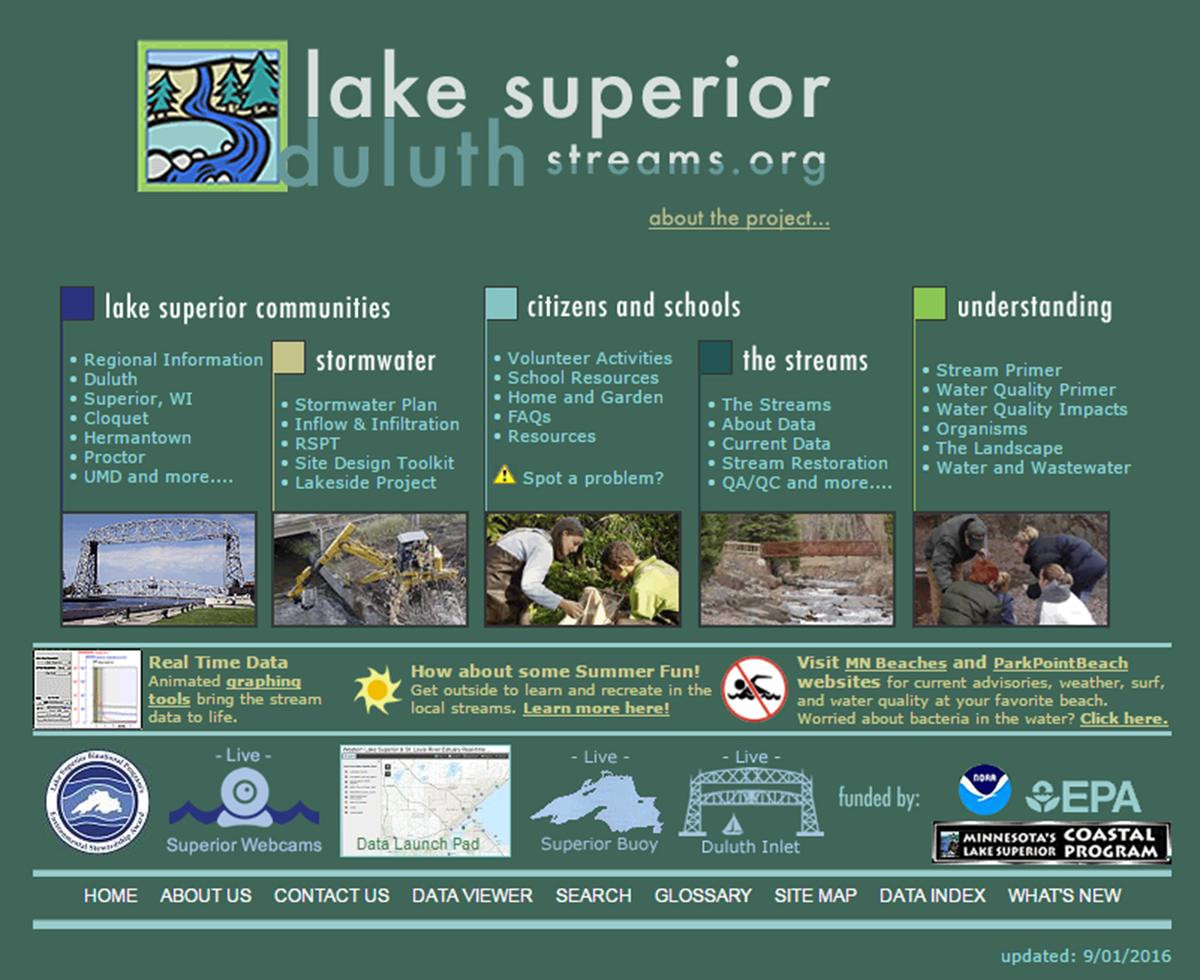City-wide partnerships were formed and funding secured to install water quality sensors in three (now there are seven) trout streams to collect data. At the time, new cell phone technology was used to transmit the data to a website, www.DuluthStreams.org, where people could explore the data with interactive graphing and animation tools. They could see what happens in streams at night, after big storms, during winter and spring thaws. This high-tech tool shared indepth information about how to reduce stormwater impacts to water.
“We wanted to use these new technologies to really make a difference,” explained NRRI aquatic scientist Rich Axler. “The timing was a perfect storm of having a great collaboration of folks and funding.”
And it continues that mission as LakeSuperiorStreams.org,a cutting-edge tool that persists with support from the City of Duluth, Minnesota Sea Grant, Minnesota DNR’s Lake Superior Coastal Program, Minnesota Pollution Control Agency and other funding and technical resources. It includes the greater western Lake Superior region with information for streams up the North Shore and into Wisconsin.
The website evolved in lockstep with the award winning Regional Stormwater Protection Team (RSPT), comprised of 26 municipalities, universities, other local units of government, and water-focused organizations and businesses that has met monthly since 2002 to share technical expertise and develop common educational materials and messages for homeowners, contractors, and developers. LakeSuperiorStreams.org is a key component of their stormwater pollution prevention mandate.
“We really focus on the message of protection over restoration, because that’s more fiscally responsible,” said Axler. “Lake Superior and its tributaries are the most pristine of the Great Lakes and we want to keep them that way.”
